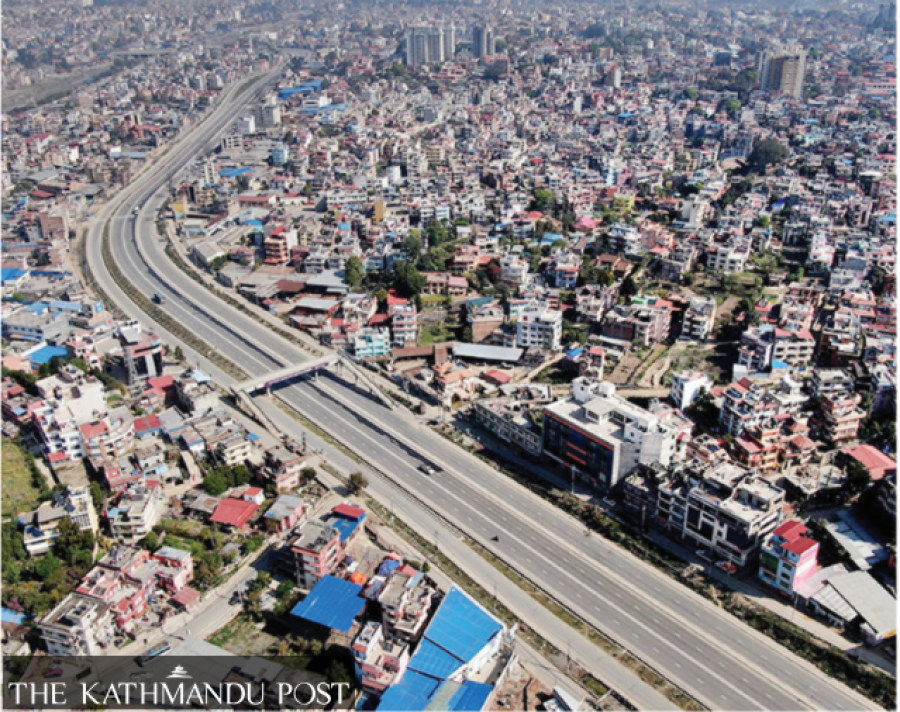Health
Covid-19 Crisis Management Centre tells districts to enforce smart lockdowns
Authorities can divide districts, local units or areas into red, amber, yellow and green zones and impose restrictions.
Arjun Poudel
Amid rising Covid-19 cases and hospitals nearing capacities, the Covid-19 Crisis Management Centre on Monday issued a circular to all district administration offices throughout the country to enforce smart lockdowns.
The centre said that district administration offices had been authorised to take decisions about restrictions on public movement and other measures to contain the spread of the coronavirus in communities as per the situation of the respective districts.
“We have been talking about smart lockdowns for a long time, but today, we have issued a circular to all district administration offices to enforce smart lockdowns from Tuesday,” Nurhari Khatiwada, spokesperson for the centre, told the Post. “Concerned local administration and the District Covid-19 Crisis Management Centre can decide the kind of measures to take to contain the spread of infections.”
On Monday, there were 39,371 active cases throughout the country. According to the Ministry of Health and Population, at least nine districts, including all three districts of Kathmandu Valley, had over 1,000 active cases. The number of active cases in the three districts of the Valley is around 9,000. Similarly, 12 districts have over 500 active cases.
Khatiwada said that the concerned local administration and the District Covid-19 Crisis Management Centre could divide the entire district, particular local units or areas into red, amber, yellow and green zones and impose restrictions accordingly as per the risk status—hard lockdown, mixed lockdown, soft lockdown and minimal lockdown.
Weekly average test positivity rate, the percentage change in infection compared to the previous week, weekly new cases per million, bed occupancy in percentage and death rate are some of the criteria for enforcing smart lockdown, according to Khatiwada.
Public health experts say that instead of using new terms, authorities concerned should focus on implementing the decisions.
“For instance, the term lockdown itself was new to the public, and authorities enforced prohibitory orders, which this time was meant to be different from similar orders enforced earlier during the political crises,” Dr Tulsi Ram Bhandari, a public health expert, told the Post. “Authorities should clearly tell the public what smart lockdown actually is.”
Experts say that authorities should have enforced restrictions or smart lockdowns in hotspot areas long ago and taken other measures to contain the spread of the virus in communities. They are sceptical about the effective implementation of smart lockdowns.
“It was wrong from an epidemiological perspective to lift most of the restrictions throughout the country at once after the devastating second wave,” said Bhandari. “I wonder what is preventing the authorities from locating the hotspots and enforcing restrictive measures at present.”
Many health experts consider the removal of all restrictions at once to be responsible for the rapid surge in Covid-19 cases.
On Monday, 2,566 people tested positive for Covid-19 in 10,093 polymerase chain reaction tests. An additional 885 people tested positive in 5,518 antigen tests. In the last 24 hours, 35 people died of the coronavirus.
Doctors say that apathy of the authorities in taking public health measures, including testing and contact tracing, and failure to heed expert suggestions were the blunders the authorities have been repeating since the beginning.
“Despite the rising number of coronavirus cases and spread of the Delta variant of the virus, not enough people are being tested,” said Dr Baburam Marasini, former director at the Epidemiology and Disease Control Division. “The government neither learns from its mistakes nor listens to experts' suggestions.”




 12.12°C Kathmandu
12.12°C Kathmandu














